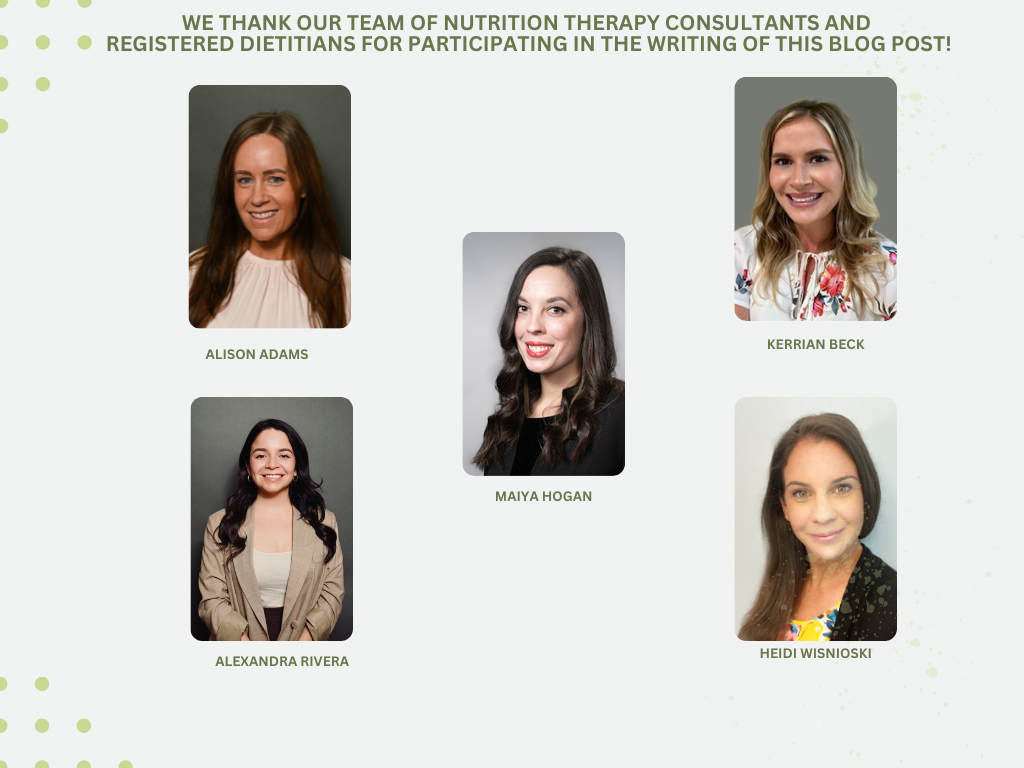
Healthy eating often comes with its fair share of misconceptions. Today, with so much information from non-reputable and non-evidence-based sources,
it’s easy to mix up sound advice with myths and misinformation about nutrition. These myths range from harmless misunderstandings to potentially dangerous misconceptions.
For example, in this month’s PCA webinar we discuss several nutrition myths that come up in relation to thyroid health. Some common misconceptions include theories that patients with thyroid disorders need to avoid cruciferous vegetables or should adopt a gluten-free diet, neither of which is true.
Inspired by the widespread nutrition information that exists today, we connected with dietitians, asking them to share examples of misconceptions
they have run into in practice and how they go about dismantling them to support better health for their patients.
The stories shared below all highlight the importance of working together with patients to achieve better outcomes. Instead of shaming or confronting patients, this approach is all about collaboration. It’s inspired by Motivational Interviewing, which respects each person’s autonomy and focuses
on their desired outcomes rather than criticizing the steps they take. Read on to learn more.
Kerriann Beck, RDN, CDN – Confusing Parathyroid and Thyroid Management
Kerriann has worked with several patients needing to manage both their parathyroid and thyroid function. She’s heard them say more than once,
“I don’t need that active vitamin D medication [to lower parathyroid hormone], because my PCP already monitors my thyroid and has me on medication
for it.”
Her go-to response is, “I can see how you may confuse the two, because the names sound similar, but the thyroid is different from the parathyroid.
They are both glands in your neck, right next to each other, but each secretes a different hormone that has a very different function in your body.
Your thyroid secretes a hormone that is related to metabolism, and based on your medical chart, yours is underproducing this hormone and that is what
the thyroid medication your PCP prescribed is for. Separately, your parathyroid gland is secreting too much of the parathyroid hormone (PTH), which helps
to keep levels of phosphorus and calcium in your blood at healthy levels. This is common in CKD/ESRD, as your parathyroid gland is trying to communicate with your kidneys, but they’re not responding. The medication that your kidney doctor wants you to take will help slow the secretion of PTH and therefore lower the levels in your blood to a healthier level.”
She notes that by taking time to acknowledge how easy it can be to mix up the parathyroid and thyroid and explain the differences in a simple way,
patients report appreciating the explanation as they never knew the difference between the two glands and become agreeable to take the prescribed
PTH-lowering medication.
Alison Adams, RD – Using Supplements to Regain Kidney Function
Alison shares, “I had a patient tell me that he was going to start taking ginseng and beetroot to help him recover [kidney] function.”
It can be difficult for patients to accept that once they have reached dialysis with chronic kidney disease, the damage is done and irreversible.
In addition, dialysis is a serious medical procedure, where supplements may create harm vs benefits. Alison stuck to the evidence, translating it in a way
the patient could easily understand, and allowed him to draw his own conclusions. Ultimately, he opted not to use the supplements.
Alexandra Rivera, MS, RD, LD – Conflicting Advice from Different Care Providers
Alexandra was educating a patient on a healthy diet when they countered her advice with, “My doctor said I can’t have any beans because they are high
in phosphorous.” She took several steps to correct this misconception, and she explains in her own words:
- I first talked with the MD about this to try to prevent further confusion. After some back and forth he agreed patients could have a portion of beans,
“As long as they take their binders”. - I prepared a handout and talked to patients at the chairside to explain the benefits of adding beans back into their diet as long as they weren’t excessively eating them and also compliant with taking binders at meals. I validated their hesitation and even fear of going against what they were first told by MD but reassured them MD was on board with this.
- I still had patients that were worried about this. I decided a lobby day focusing on high-protein foods would be a great way to reinforce a high-protein diet and shift their focus for a bit. Rather than overly addressing the bean situation, I put display foods (chicken, eggs, beans, steak) with a small card
in front of them displaying the amount of protein each portion had. This opened the door to great conversations with the patients/family members
and even amongst the patients themselves. I feel this made some of those hesitant patients feel reassured and comfortable seeing firsthand that other patients were incorporating beans in their diet and doing well.
Heidi Wisnioski, MA, RD, LDN – Too Much Sugar in Fruit
Heidi has more than once been told by patients that they can’t eat fruit because they have too much sugar. She takes an approach of acknowledgment and then helps draw comparisons between fruit and other foods in the high-sugar category. She likes to share the following,
“Yes, fruit does get broken down into sugar in the body, however, it also has important vitamins and fiber that are good for you. Eating a small portion of fruit along with a healthy protein can be an excellent snack or part of a meal. Processed or refined sugars such as soda, candy, pastries, and other sweetened drinks should be limited.”
By listening to patients and using evidence-based practices, dietitians and other care providers can have meaningful conversations and dispel nutrition myths. This helps patients see dietitians as reliable sources of nutrition information and dedicated support. Building strong patient-provider relationships makes it easier to help patients when they need it, whether it’s clarifying information, treating malnutrition, or preparing for a new step in their healthcare journey.
To learn more about Patient Care America, our clinician and patient resources, and how we help treat malnutrition in the dialysis population,
visit pcacorp.com.

